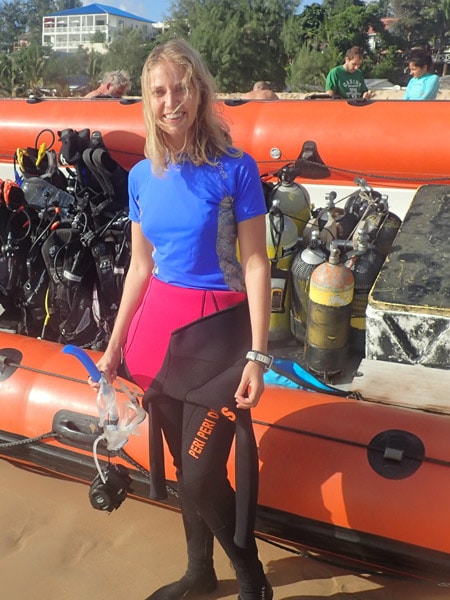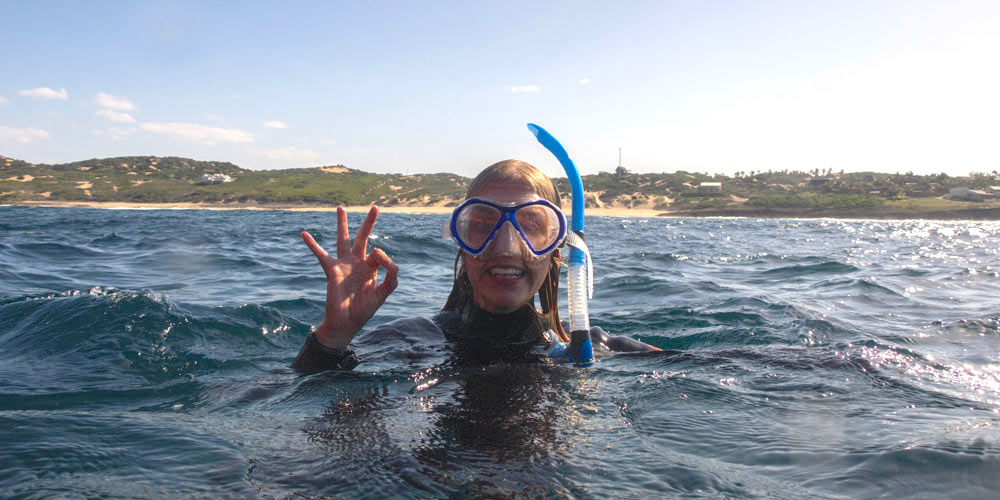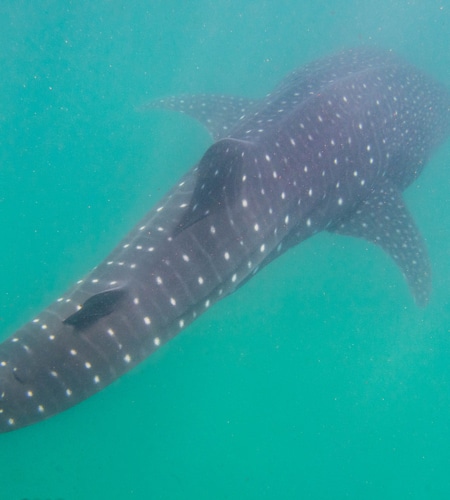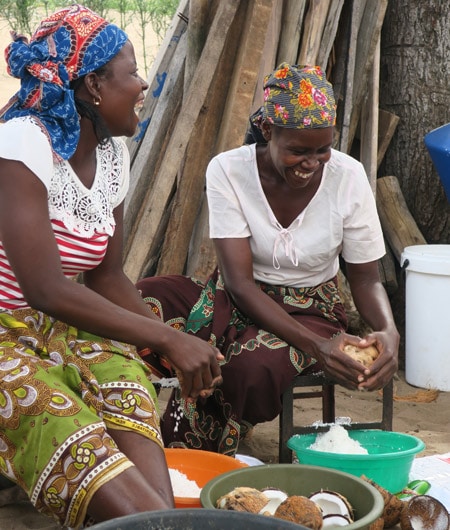Melissa Hobson quits her job to follow her dreams of moving to Mozambique and joining a marine conservation charity
Did you know that no-one has ever seen a whale shark give birth? And that manta rays have the biggest brain of any fish? Or that, according to the World Economic Forum, plastic in the ocean will outweigh fish by 2050? Until just a few months ago – when I quit my job and moved to Mozambique to volunteer for the Marine Megafauna Foundation (MMF) – I didn’t either. Since then, I’ve been working with the charity’s world-renowned marine conservationists and have learned a huge amount about what’s involved in ocean conservation.
MMF’s vision is a world in which marine life and humans thrive together and they focus on the protection of marine megafauna – aka “ocean giants”. In doing so, they can also achieve an umbrella protection for a wide variety of other marine species. As you might expect, a large part of MMF’s work is ocean-based. But you might be surprised to hear that you don’t need to be a qualified marine biologist to contribute to current conservation research – anyone with a camera or GoPro can get involved. So, armed with my underwater camera, I headed out on “ocean safari” with MMF and Peri-Peri Divers to try to find and swim with the giants of the ocean.

Melissa Hobson
Two of the key species we were looking for were whale sharks and manta rays, which can both be found year-round in Tofo Beach, Mozambique. Whale sharks, despite the slightly confusing name, are not whales but sharks (the largest shark on the planet, to be precise). These mammoth filter-feeders, which can reach up to 20m in length, are categorised as endangered on the IUCN Red List of Endangered Species. Manta rays,a vulnerable species, can dive to depths of over a kilometre! Despite their immense size, both whale sharks and manta rays are totally harmless to humans and, because they come to the surface to feed, you don’t need to be a qualified scuba diver to see them.
After driving the boat around the bay and searching for some time, our skipper spotted a dark shape near the surface of the water and a fin cut through the waves: a whale shark! It wasn’t until we were actually in the water with the shark that it dawned on me how huge it really was. We were swimming alongside a juvenile that was “only” 5m in length but it still dwarfed us in the water.
As an adult, it could grow up to 20m long. I couldn’t imagine how small I’d feel if I ever came across one that was fully grown. I kicked hard to keep up and aimed my camera at this breathtakingly huge animal as I swam.


A whale shark
I needed to photograph the side of the shark, just behind its gill slits and above its pectoral fin. Its intricate spot patterns, which look like the milky way, are not only beautiful but are also as unique as a human fingerprint. This means scientists can use images of the spots to identify each individual shark. So, once I returned to shore, I uploaded my snaps to WhaleShark.org where researchers could use the picture to log and track the movements of that specific shark. Being in the water with a majestic whale shark and contributing to current conservation efforts was a truly amazing experience and one I’d highly recommend to families with adventurous, ocean-loving teens.
If you’re not a strong swimmer or are nervous about ocean snorkelling, there are also land-based activities you can take part in which have a positive impact on marine conservation. A couple of days after my safari, I went to visit Tofo Life: an ecotourism experience run by women from the local community.
The initiative was set up as a way of helping the locals find new sources of income that would enable them to reduce the amount they went out fishing. The majority of the community relies on fishing for their food and livelihood so without an alternative means of income, they wouldn’t be able to reduce their unsustainable fishing practices. While some fishermen have turned to farming and agriculture, this group of 10 women set up the Tofo Life ecotourism venture where they invite tourists into their homes to learn about their daily life.
As we arrived in the village, we were greeted by a group of women holding colourful piles of fabric who burst into song as they expertly wrapped us up in the patterned capulana – a type of sarong worn in Mozambique and some other African countries. After a quick tour of the village and a demonstration of how they make woven mats, we got down to work. We were learning how to make “matapa” – a local dish made of cassava leaves, garlic, peanuts and coconut milk.

The Tofo Life ladies
This involved pounding cassava leaves with a heavy pole to break them into tiny pieces, pummelling peanuts to make a fine dust and grating coconut flesh before soaking it in water and squeezing it out to produce coconut milk.
The Tofo Life ladies laughed good-humouredly at how much we struggled with something that was a simple daily task for them – even the strongest of us found the work harder than expected. Without any modern tools or equipment, it took a couple of hours before the ingredients had been mixed together, cooked and our delicious, steaming plates of matapa were ready to eat.
By the time the meal was ready, we’d worked up quite the appetite. We sat cross legged on the floor and tucked into our heaped piles of rice, matapa and peri peri before heading back to the “reality” of our tropical paradise at Tofo Beach.
If you’re interested in helping the Marine Megafauna Foundation save the world’s ocean giants from extinction, there are several ways you can support. You could make a donation, become a member, take part in fundraising challenges or events or help raise awareness of the issues faced by ocean giants.
Getting there
TAP Air Portugal flies from London to Maputo via Lisbon (approx. 16 hours). You can then catch a connecting flight to Inhambane with LAM (1 hour), which is around 30 mins’ drive from Tofo Beach and will cost you roughly 800 Meticals (£10) in a taxi.
Staying there
The newly built Casa Naroo guesthouse boasts panoramic ocean, lagoon and sunset views as well as artwork from Wildlife Photographer of the Year winner Aaron Gekoski displayed throughout the interior. Nestled on the dunes, just 10 minutes’ walk from both Tofo and Tofinho beaches, it’s the perfect spot to enjoy peaceful seclusion. From $184 per night for two adults and two children.
Getting around
Tofo Beach is very small so you’ll be able to get around easily on foot. If you’re keen to explore a bit further, you can hire a 4×4.
Activities
The Tofo Life experience costs 1,500 Mozambican Meticals per person (around £19). An ocean safari with Peri-Peri Divers is $50 USD per person (around £37).